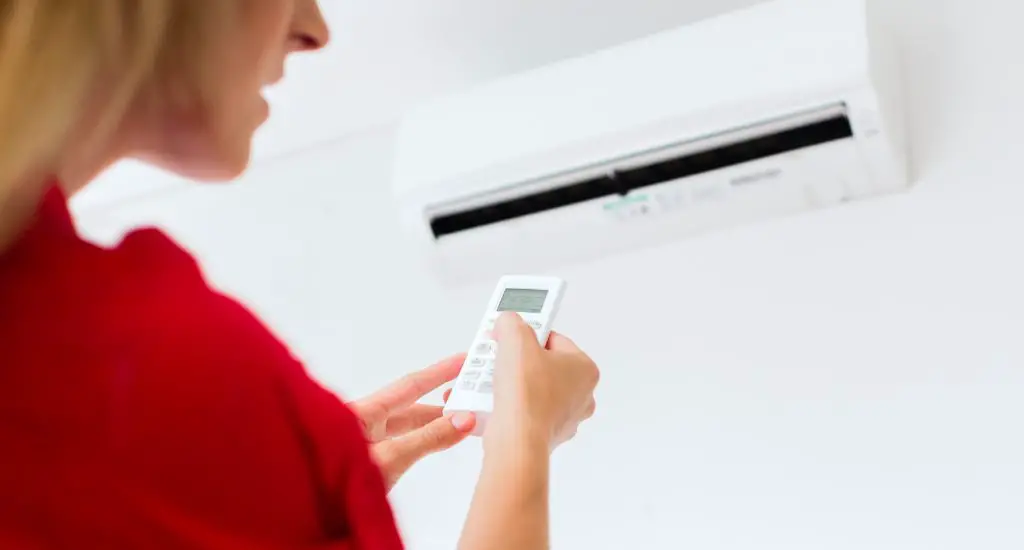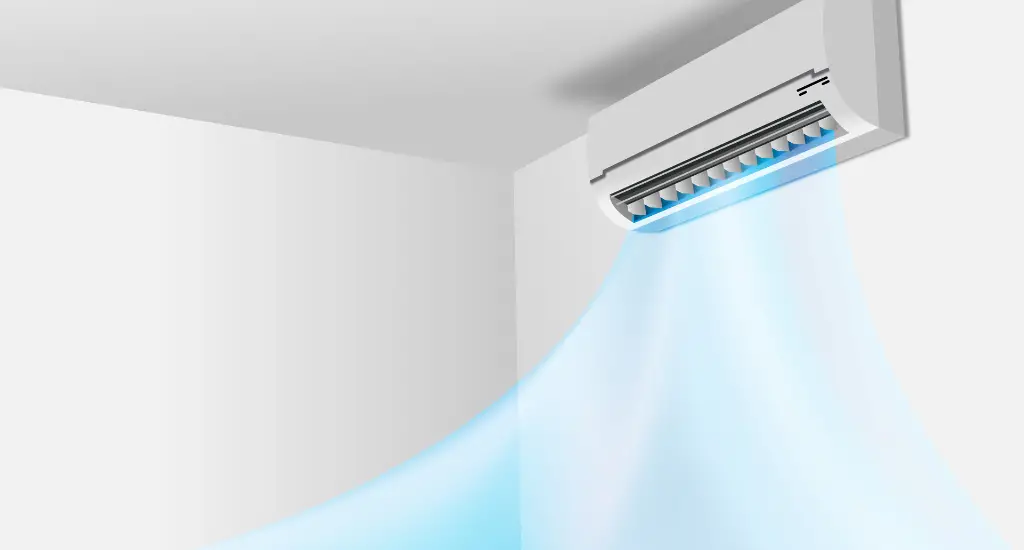Air conditioning is a necessity during hot summer months, and when it stops working properly, it can be a frustrating and uncomfortable experience. There are several reasons why an AC may not cool properly, from dirty air filters to a faulty compressor.
In this article, we will explore ten possible reasons behind AC not cooling properly, their symptoms, and how to fix them.

Dirty or Clogged Air Filter
First on the list of reasons behind AC not cooling is dirty or clogged air filters. The air filter is an essential component of an AC, as it prevents dust, debris, and other particles from entering the system. A dirty or clogged air filter can hinder airflow, making it harder for the AC to cool the room. Symptoms of a dirty or clogged air filter include reduced airflow, increased energy consumption, and an AC that takes longer to cool a room.
To fix this issue, replace the air filter regularly, depending on usage and manufacturer’s recommendation. For most filters, it is recommended to replace them every three months, but if you have pets or allergies, you may need to replace them more frequently.
Thermostat Issues
The thermostat is responsible for measuring the room temperature and communicating with the AC to adjust the cooling accordingly. If the thermostat is malfunctioning or not calibrated correctly, it can result in AC not cooling properly. Common thermostat issues include incorrect temperature readings, unresponsive controls, and a thermostat that won’t turn on.
To troubleshoot thermostat issues, start by checking the calibration and location. The thermostat should be placed away from direct sunlight, drafts, and other heat sources. If the calibration is off, adjust it according to the manufacturer’s instructions. If these steps don’t work, you may need to replace the thermostat or call a professional to address your AC not cooling properly.
Low Refrigerant Levels
Refrigerant is a chemical that absorbs heat from the indoor air and transfers it outside, thus cooling the room. If the refrigerant levels are low, the AC will not be able to cool the room effectively. Common causes of low refrigerant levels include leaks, improper installation, and evaporation.
Symptoms of low refrigerant levels include reduced airflow, warm air coming out of the AC, and ice buildup on the evaporator coil. To fix this issue, a professional should be called to detect and fix any leaks, recharge the refrigerant, and ensure proper installation.
Dirty Condenser Coils
Another potent reason behind AC not cooling could be the dirty condenser coils. The condenser coils are responsible for transferring the heat absorbed by the refrigerant to the outdoor air. When the coils are dirty or clogged, they cannot release the heat properly, resulting in an AC that cannot cool the room effectively. Causes of dirty condenser coils include a lack of regular maintenance, nearby foliage, and improper installation.
Symptoms of dirty condenser coils include reduced airflow, increased energy consumption, and an AC that takes longer to cool a room. For condenser coil cleaning, first, turn off the AC and disconnect the power supply. Then, use a soft brush or vacuum cleaner to remove any dirt, debris, or foliage. If the coils are severely dirty, a professional should be called.
Faulty Compressor
The compressor is the heart of the AC, responsible for pumping refrigerant through the system and generating cool air. If the compressor is faulty, it can cause the AC to not cool properly. Causes of a faulty compressor include wear and tear, electrical issues, and overheating.
Symptoms of a faulty compressor include reduced airflow, warm air coming out of the AC, and unusual noises. To fix this issue, a professional should be called to diagnose the problem and either repair or replace the compressor.
Blocked or Damaged Ductwork
Ductwork is responsible for distributing the cool air generated by the AC to different rooms in the house. If the ductwork is blocked or damaged, it can prevent the cool air from reaching its intended destination, resulting in an AC that cannot cool the room properly. Causes of blocked or damaged ductwork include dirt, debris, and pests.
Symptoms of blocked or damaged ductwork include reduced airflow, uneven cooling, and strange noises. To fix this issue, inspect the ductwork for any visible damage or blockages. If the problem is severe, a professional should be called for air duct cleaning, repair or replace the ductwork.
Leaky Air Ducts
Air ducts can develop leaks over time, which can cause the cool air to escape before it reaches its intended destination. Causes of leaky air ducts include wear and tear, improper installation, and pests.
Symptoms of leaky air ducts include reduced airflow, uneven cooling, and increased energy consumption. To fix this issue, inspect the air ducts for any visible leaks or damage. Seal any leaks with duct tape or sealant, and replace any damaged ductwork. If the problem is severe, a professional should be called to repair or replace the air ducts.
Overworking AC
An AC that is overworking can cause it to not cool the room effectively. Causes of an overworking AC include improper sizing, lack of maintenance, and extreme temperatures.
Symptoms of an overworking AC include increased energy consumption, reduced airflow, and an AC that takes longer to cool a room. To fix this issue, ensure that the AC is sized correctly for the room and that it is well-maintained. It’s also recommended to use a programmable thermostat to control the AC’s usage and conserve energy.
Electrical Issues
Electrical issues can cause the AC to not cool the room effectively. Causes of electrical issues include faulty wiring, blown fuses, and tripped circuit breakers.
Symptoms of electrical issues include an AC that won’t turn on, unusual noises, and reduced airflow. To fix this issue, check the circuit breaker and fuses to ensure that they are working properly. If the issue persists, call a professional to diagnose and repair any electrical issues.
Old AC
An AC that is old or nearing the end of its lifespan may not cool the room effectively. Causes of an old AC include wear and tear, lack of maintenance, and outdated technology.
Symptoms of an old AC include reduced airflow, increased energy consumption, and an AC that takes longer to cool a room. To fix this issue, it may be time to replace the AC with a newer, more energy-efficient model. A professional can help with choosing the right AC for your needs and budget.
Stay Cool and Beat the Heat this Summer with These AC Fixes!

In conclusion, there are several reasons for AC not cooling properly, and diagnosing the problem can be challenging. However, by understanding the common causes and symptoms of AC issues, homeowners can take steps to troubleshoot and fix the problem. It’s also essential to ensure that the AC is well-maintained, and that any issues are addressed promptly to avoid further damage and costly repairs.



